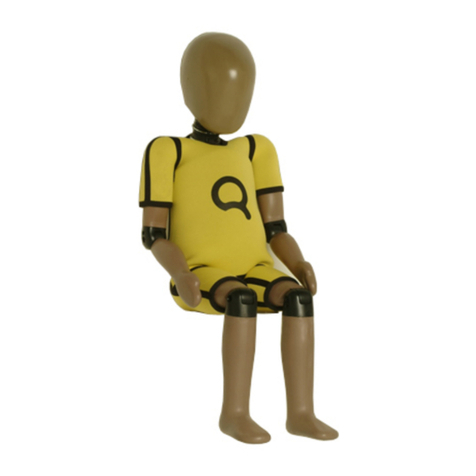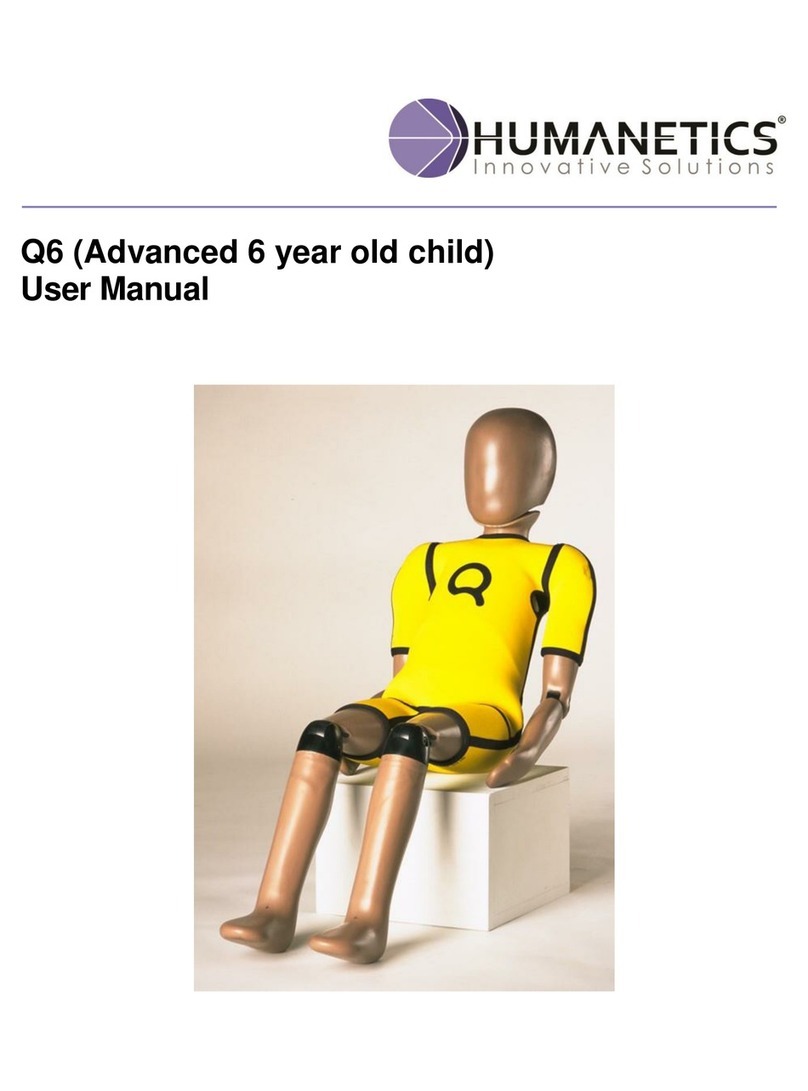
880105-9900 User Manual Hybrid III 5th Female Rev G Page 3 of 86
© 2020 Humanetics Innovative Solutions
Table of Contents
Section – 1 Introduction ................................................................................................................................6
1.1 Foreword.................................................................................................................................................6
1.2 Manual Overview ....................................................................................................................................6
1.2.1 Appendices..................................................................................................................................6
1.2.2 SAE Documents..........................................................................................................................6
1.2.3 SAE Test Definitions ...................................................................................................................6
1.2.4 Abbreviations...............................................................................................................................7
1.3 Construction............................................................................................................................................8
1.4 Clothing...................................................................................................................................................8
1.5 Instrumentation .......................................................................................................................................9
1.6 Special Tools.........................................................................................................................................11
Section 2 – Head and Neck Removal.........................................................................................................12
2.1 Disassembly......................................................................................................................................12
2.2 Reassembly......................................................................................................................................14
2.3 Inspection..........................................................................................................................................14
Section 3- Head Assembly..........................................................................................................................15
3.1 Disassembly......................................................................................................................................16
3.2 Reassembly......................................................................................................................................16
3.3 Inspection..........................................................................................................................................16
Section 4 – Neck Assembly ........................................................................................................................18
4.1 Disassembly......................................................................................................................................19
4.2 Reassembly......................................................................................................................................20
4.3 Inspection..........................................................................................................................................20
Section 5 – Upper Torso Assembly ............................................................................................................21
5.1 Disassembly......................................................................................................................................24
5.2 Reassembly......................................................................................................................................25
5.3 Inspection..........................................................................................................................................26
5.4 Chest Deflection Disassembly..........................................................................................................30
5.5 Chest Deflection Reassembly...........................................................................................................30
5.6 Chest Deflection Inspection..............................................................................................................31
5.7 Shoulder Assembly...........................................................................................................................32
5.8 Shoulder Disassembly......................................................................................................................33
5.9 Shoulder Reassembly.......................................................................................................................34
5.10 Shoulder Inspection........................................................................................................................34
Section 6 – Lower Torso Assembly ............................................................................................................35
6.1 Lumbar Disassembly ........................................................................................................................37
6.2 Lumbar Reassembly.........................................................................................................................37
6.3 Pelvis Disassembly...........................................................................................................................38
6.4 Pelvis Reassembly ...........................................................................................................................40
6.5 Lower Torso Inspection ....................................................................................................................40
Section 7- Arm Assembly............................................................................................................................41
7.1 Disassembly......................................................................................................................................42
7.2 Reassembly......................................................................................................................................42
7.3 Inspection..........................................................................................................................................42
Section 8- Leg Assembly ............................................................................................................................43
8.1 Leg Disassembly ..............................................................................................................................44
8.2 Leg Reassembly...............................................................................................................................44
8.3 Leg Inspection ..................................................................................................................................44
8.4 Lower Leg Disassembly....................................................................................................................46
8.5 Lower Leg Reassembly ....................................................................................................................46
8.6 Lower Leg Inspection........................................................................................................................46
8.7 Ankle Disassembly ...........................................................................................................................48
8.8 Ankle Reassembly............................................................................................................................48
8.9 Ankle Inspection ...............................................................................................................................48
8.10 Instrumented Leg Disassembly ......................................................................................................49






























